In the past two days, central Texas has been hit with a series of heavy rain storms which have caused flooding from overflowing creeks and streams. Ironically, the storms have swamped the central part of a state still suffering a severe, five-year-long drought that has caused widespread economic hardship and damage.
The storms hit only a few days after Austin, one of Texas' most vibrant cities, hosted the SXSW Eco conference where more than 350 speakers spent three days talking about "connecting passion to profession," in the words of the conference organizers. Their audience included a variety of environmental activists, engineers, educators, landscape architects, artists, economists, bankers, bicycle advocates, and many others. They met in the Austin Convention Center, mingled in nearby watering holes, or borrowed loaner bikes to explore the city of Austin.
One session featured writers from across the country asking whether the media are accurately reporting on climate change, beyond a focus on extreme weather events. Another panel, which featured NYC's Chief Sustainability Officer, Dan Zarrilli, looked at the challenges of "Futureproofing Cities." Zarrilli, like many New York leaders who saw the devastation of Superstorm Sandy, now understands that we need to prepare not just for storms like the last one, but for the next one which may be different than Sandy. To this end, we must look at New York and other coastal cities as interdependent systems where all the elements must work together to keep a livable city in the face of climate change.
Austin was a perfect choice as a host city, and not just because this conference was a spinoff of the hugely successful SXSW music festival. Austin has almost 850,000 people and has grown by 40 percent in the last decade, making it one of the nation's fastest-growing cities. With large new office and residential buildings and neighborhoods sprouting all over, it has become a creative hub for start-up high tech companies and it is anchored by the University of Texas, with more than 50,000 students. It has a new light rail line, and next spring it will unveil its own bike share program, similar to those in New York, Washington D.C., San Francisco, Boston and other American and European cities.
Austin is also a surprisingly green city. With 19,000 acres of parks, Austin has one of the largest urban park systems in the nation. According to the Trust for Public Land's ParkScore, Austin has a very high median park size, at 10 acres. Fully half of Austin residents live within a 10-minute walk of a park or open space. Among the major parks is the 1,000-acre Barton Creek Greenbelt, a massive series of interconnected open spaces running from the outskirts of the city to Lady Bird Lake, the city's central feature, named for former first ladyLady Bird Johnson, an Austin native and founder of the Lady Bird Johnson Wildflower Center.
The Barton Creek ensemble, which includes a beautiful natural swimming pool beloved by locals, was created with the help of The Trust for Public Land two decades ago, and Austinites can hike, bike, climb and paddle (when the water is running) in its rustic surroundings. The "lake" that the creek ends in is in fact part of the Colorado River, which has been dammed in several places; just outside of the center, the outfall from the lake feeds the city's main drinking water reservoir and serves all of Austin.
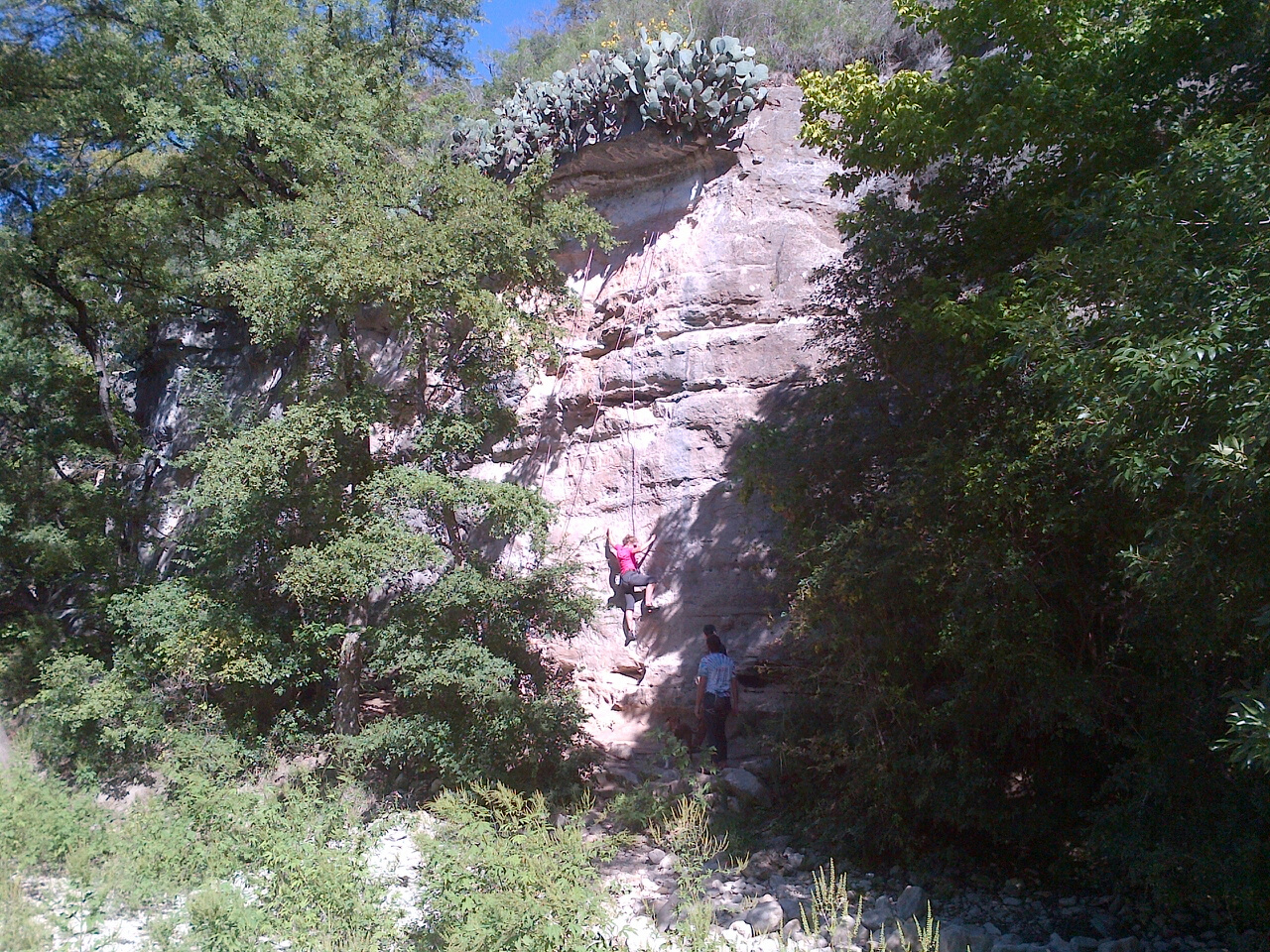
Climbers in the Barton Creek Greenbelt. Photo by Adrian Benepe.
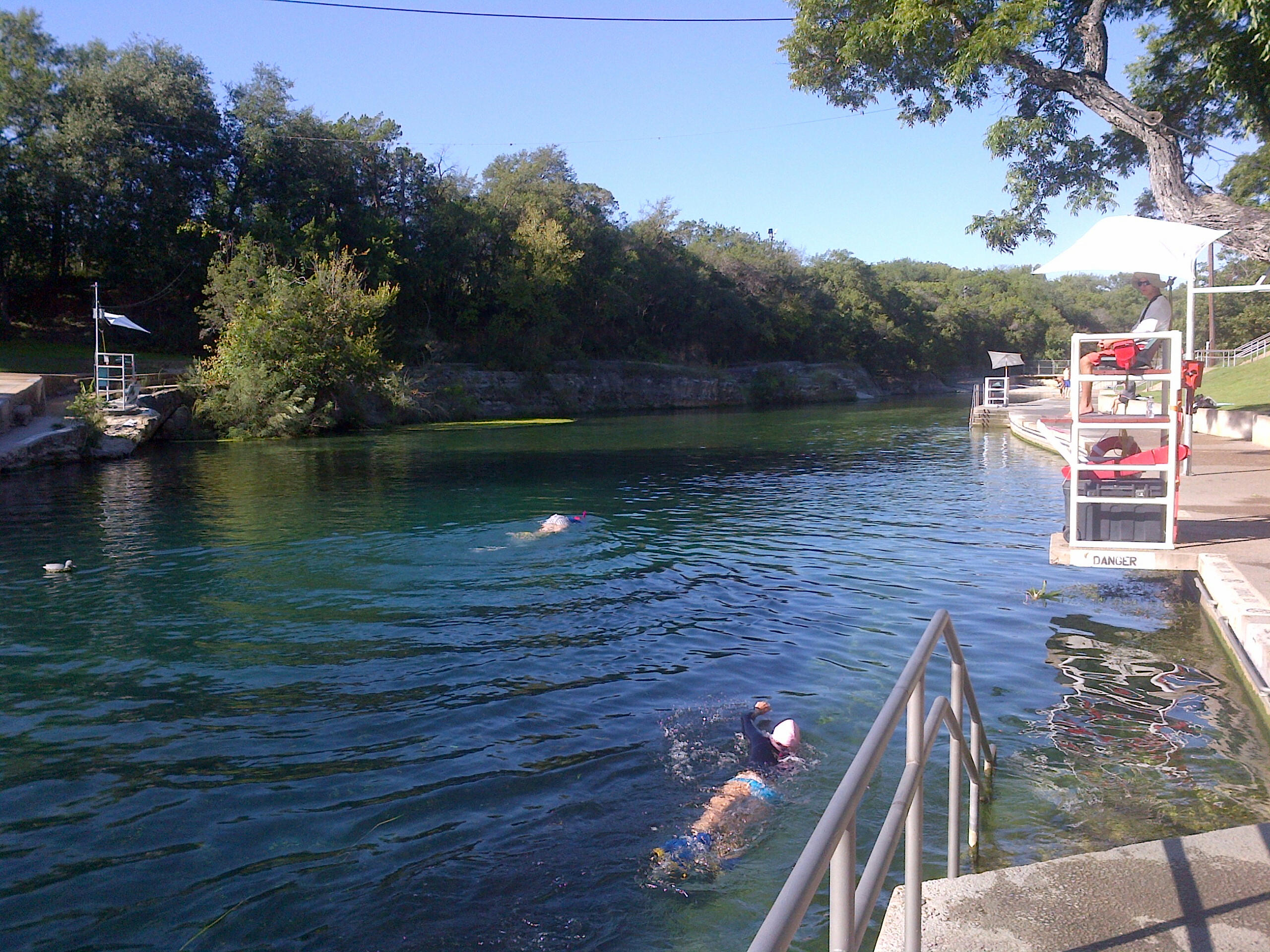
Barton Springs Pool. Photo by Adrian Benepe.
Not content to rest on their laurels, the Austin Park and Recreation Department (PARD), headed by Sara Hensley, is embarking on several major initiatives to enhance the quality of life in Austin. One is a boardwalk path on the south side of Lady Bird Lake, now under construction, which will allow residents of the rapidly growing (and somewhat park-deprived) east side of the city to gain access to the wonderful waterfront parks and paths of Lady Bird Lake and the Barton Creek Greenbelt.
As with other cities, PARD is partnering with several entrepreneurial non-profit organizations, including the Waller Creek Conservancy, to jointly improve access to and conditions of public space. Waller Creek is a 1.5-mile, narrow creek that runs down from the north, along the eastern side of the UT campus, right past the convention center, finally spilling into Lady Bird Lake. In its current somewhat degraded condition, it is still nonetheless an important ecosystem and partial recreational trail. But thanks to the conservancy, it will soon become a linear greenway connecting several parks, as redesigned by landscape architecture firm Michael Van Valkenburgh Associates (MVVA).
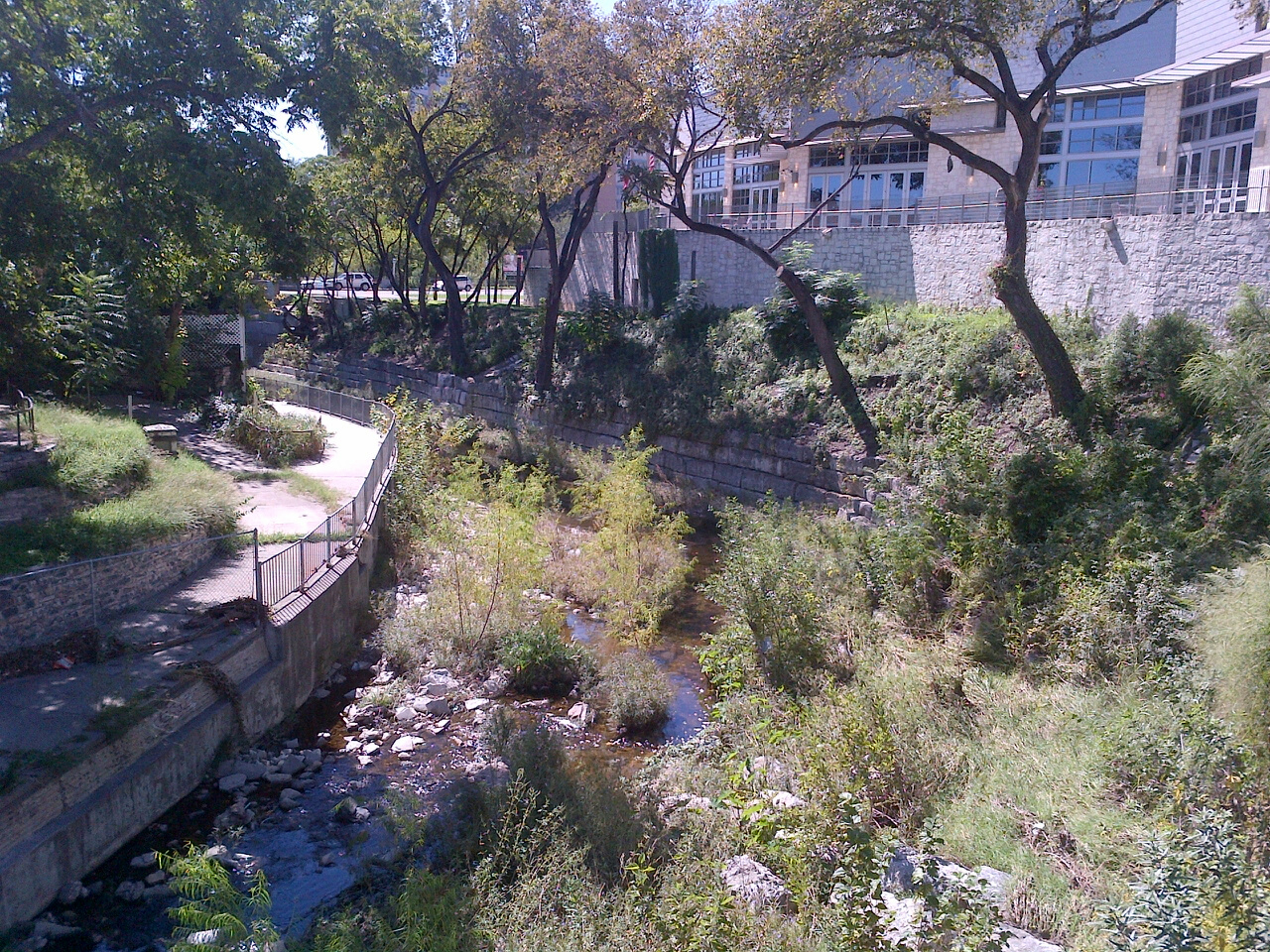
Waller Creek as it flows by the Austin Convention Center. Photo by Adrian Benepe.
Associated with the revival of the creek is the construction of an adjacent tunnel that will both help with the capture of stormwater from the occasional but intense rain storms, such as those the region saw over the weekend and which can cause flooding and stream bank erosion. The tunnel will also carry water from Lady Bird Lake to the head of the stream to help maintain a consistent water flow and the ecology of the creek. Two large parks and one smaller adjoining park will be improved and better melded with the creek and a continuous path under a plan envisioned by MVVA, which was one of four finalists in an international design competition launched in 2011.
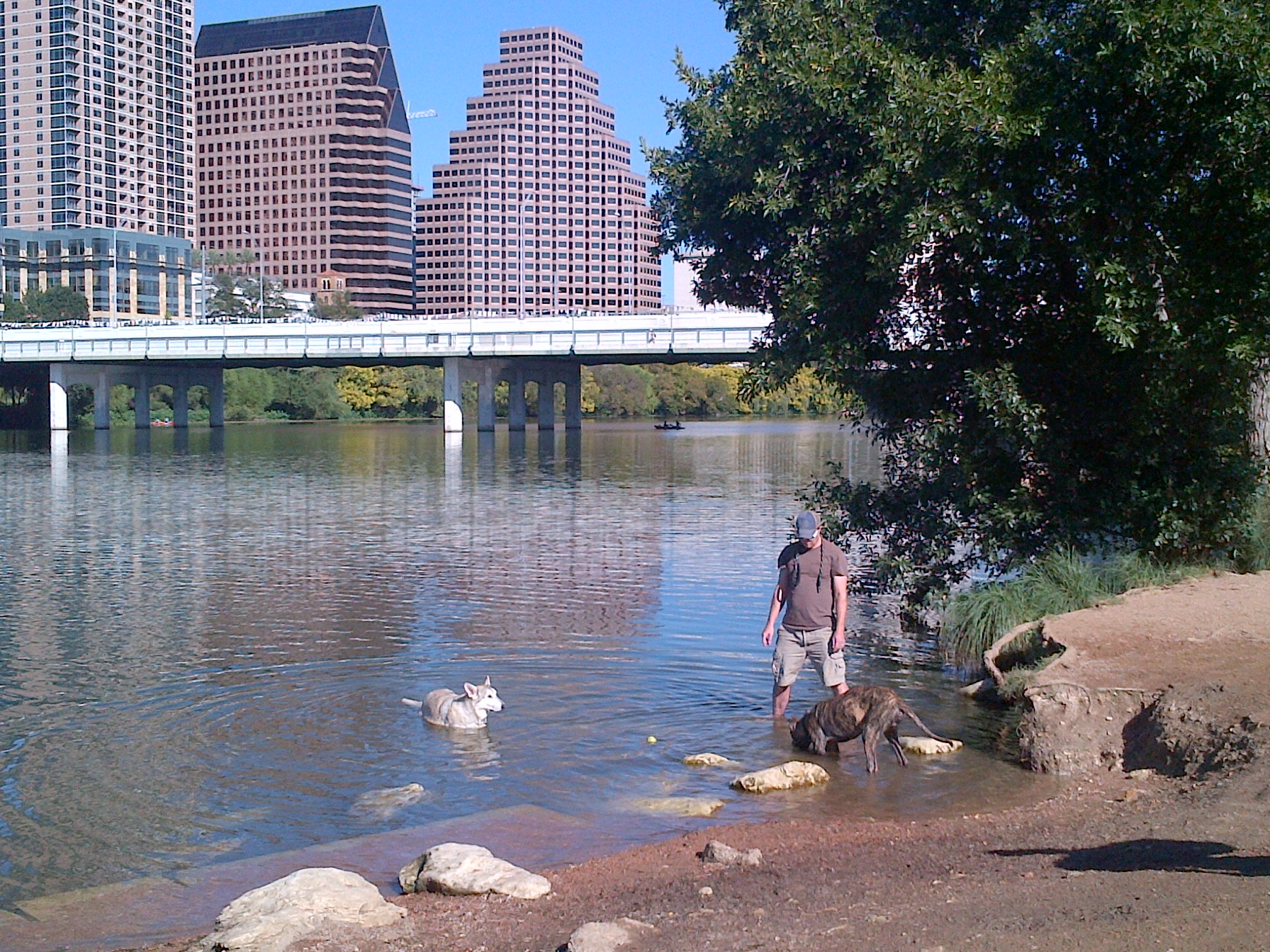
On the banks of Lady Bird Lake in Austin. Photo by Adrian Benepe.
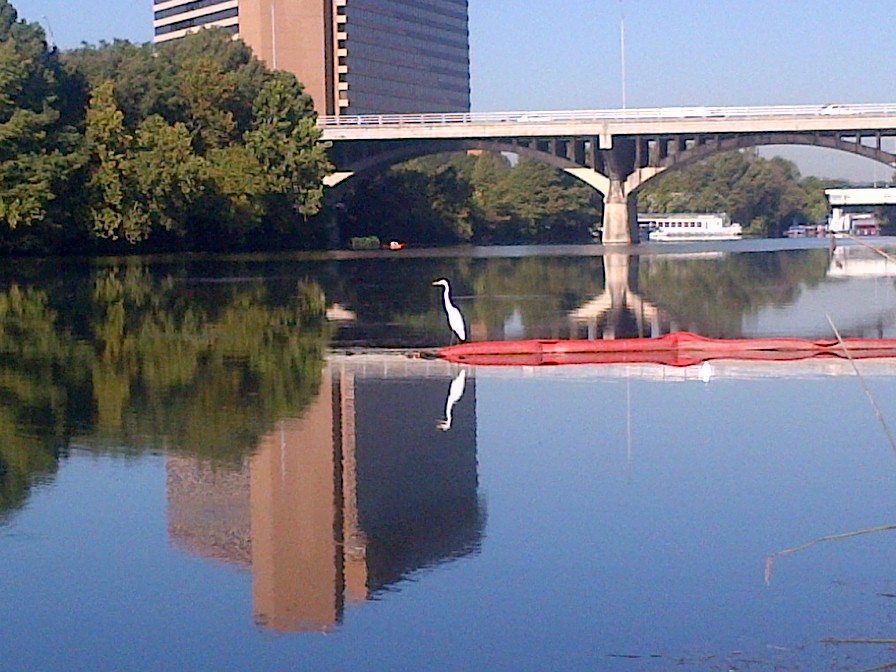
City and nature intertwined in Austin. Photo by Adrian Benepe.
While the future of Austin looks green from some angles, water is a determining factor, much as it is in coastal cities facing the challenge of rising sea levels and climate change-induced storms of greater frequency and intensity -- in Austin's case, the problem may be too little water overall, but with even stronger storms when the rains do come.
Heather Venhaus, the Austin-based green infrastructure expert (she was an author of the Sustainable Sites Initiative while at the Johnson Wildflower Center, working with the American Society of Landscape Architects) cites the availability of water as the chief challenge facing Austin and many other Texas communities. The reservoir that is fed by the Colorado River is 20 feet lower than normal in the current state-wide drought conditions. As the daughter of a West Texas rancher, Venhaus, who spoke at the SXSW ECO conference, knows from water. As Venhaus sees it, "The issues of flooding and drought are connected, due to too much impervious surface."
Venhaus also suggests easing various building regulations to allow property owners to harvest and reuse rain water and air conditioner condensate for irrigation -- something currently difficult under health regulations. "Every drop of rain that falls needs to be seen as a resource," says Venhaus. "Slow it down, get it into the soil to recharge the aquifer instead of into the creeks."
